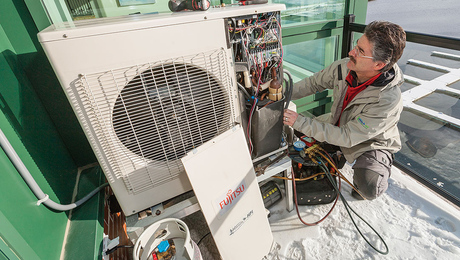An Impressive Air-to-Water Heat Pump
See why air-to-water heat pumps might become the new industry standard.
At the 2025 International Builders’ Show, we saw many exciting new products that signal where our industry is headed, one of which was Enertech’s air-to-water heat pump. Unlike the more familiar air-to-air units, these systems move energy into water, allowing for more efficient heating and cooling options for a range of emitters. Water can store energy much more efficiently than batteries, so air-to-water heat pumps make a smart companion to solar systems. Watch the video above or keep reading to learn more from high-performance builder Ben Bogie.
Here’s the Transcript
We’re here at the Enertech booth, and I want to share with you something I’m really excited about in the industry that I’ve been seeing continued growth in year over year. This is air-to-water heat pumps. We’re all used to air-to-air heat pumps, which are the typical heat pumps that we see either mounted on walls or as air handlers.
These things here, instead of putting the energy into air, they’re going to be putting the energy into water — in the case of the Enertech system, a water and glycol mix. This one in particular is called a direct-to-load. What this does is pull energy out of the airstream outside your building and put it into a fluid — a mix of water and glycol.
That water and glycol will come over to the brains of the operation — a series of circulator pumps, zone valves, controls, and expansion tanks — and then it’s going to deliver this to whatever emitters are inside your building.
These can be things like a fan coil — a traditional hydronic coil that we’re used to. This could be a low-temperature radiator panel. This could be in-floor radiant. This could be in-ceiling radiant. It could be any multitude of different emitters that you can use in your projects.
The thing I’m really excited about with these is that it is very easy for us to store energy in water — much easier than it is to store energy in batteries. So if we have a situation where we have a low-load building with solar on the roof, we can take that energy, put it into these systems, pump heat into a tank, and store it. Then at night, when we don’t have the sun, we can draw that energy out of the tank and deliver it to the building. This is where our industry is headed.
RELATED STORIES

























